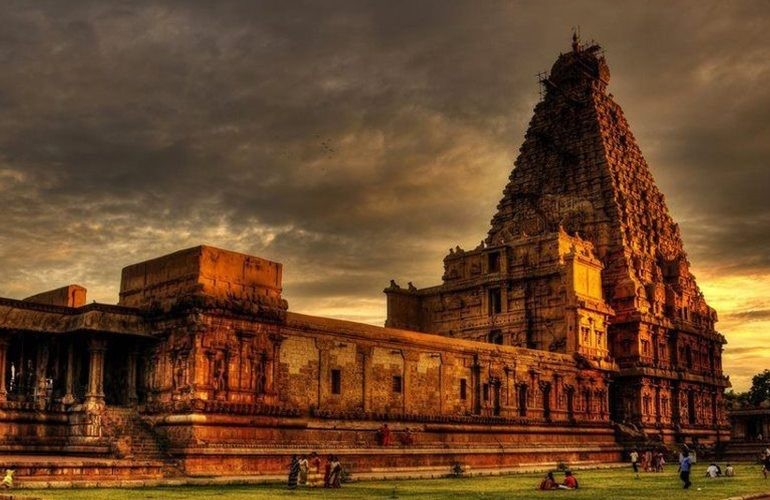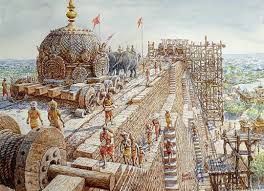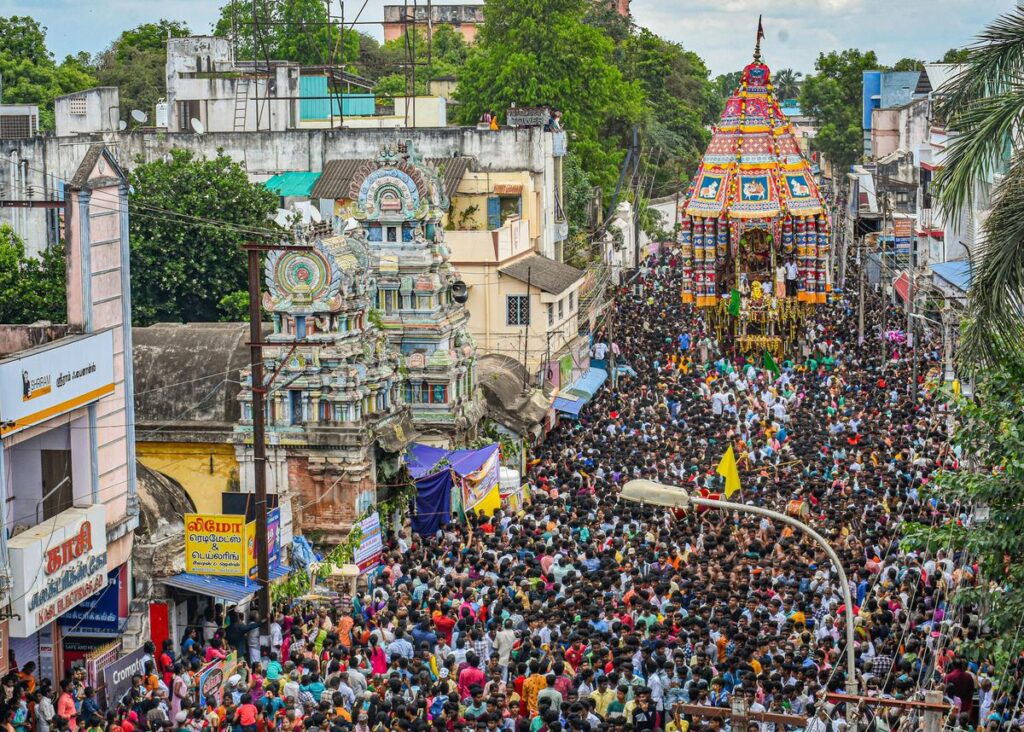
The Brihadisvara Temple, also known as the Rajarajeswaram, is a Hindu temple dedicated to Shiva located in Thanjavur, Tamil Nadu, India. It is one of the largest and most significant temples in India and is a prime example of Dravidian architecture. The temple was built by Raja Raja Chola I between 1003 and 1010 CE, during the peak of the Chola dynasty. The Brihadisvara Temple is part of the UNESCO World Heritage Site known as the Great Living Chola Temples, which also includes the temples of Gangaikonda Cholapuram and Airavatesvara Temple at Darasuram.
UNESCO World Heritage Status:
The Brihadisvara Temple was designated as a UNESCO World Heritage Site in 1987, recognizing its historical, cultural, and architectural importance. It continues to be a major pilgrimage site for Hindus and attracts scholars, tourists, and art enthusiasts from around the world
Construction Materials and Techniques:
- The temple is primarily made of granite, a durable and hard material, and is a marvel of ancient engineering. The construction of the temple’s massive central dome, the Vimana, without the use of modern cranes or heavy machinery, is considered an extraordinary feat. Some theories suggest that the enormous stone used to cap the Vimana was transported with the help of elephants and wooden pulleys.


Festivals:
- The Brihadisvara Temple hosts several important festivals, including Mahashivaratri, Panguni Uthiram, and Navaratri, attracting large crowds of devotees and tourists.
Accessibility:
- The temple is located in the heart of Thanjavur, a historic city well connected by road and rail. The city is also known for its historical monuments, including the Thanjavur Maratha Palace and the Saraswati Mahal Library, making it an important cultural destination in Tamil Nadu.
Key Features of the Brihadisvara Temple:
Architectural Grandeur:
- The Brihadisvara Temple is renowned for its monumental scale and architectural beauty, showcasing the zenith of Dravidian temple design.
- The temple complex covers an area of about 250,000 square feet (23,000 m²), with a central shrine, several smaller shrines, a courtyard, and a massive 216-foot (66 m) tall Vimana (tower) over the sanctum, which is one of the tallest of its kind in India.
Vimana (Tower):
- The central tower (Vimana) is an engineering marvel, and its dome is capped with a massive stone, believed to weigh around 80 tons. The structure was designed to be visually dominant, with intricate carvings and sculptures adorning its surfaces.
Main Shrine (Garbhagriha):
- The sanctum or inner shrine houses a massive Shiva Lingam (idol of Shiva) that stands around 8 feet tall and is made of granite. The temple is dedicated to Rajarajeswaram (a form of Shiva) and is believed to have been built to commemorate Raja Raja Chola I’s military conquests and his divine favor.
Nandi Statue:
- In front of the temple, there is a colossal statue of Nandi (the bull, the vehicle of Shiva), carved from a single block of granite. The statue is about 16 feet (4.9 meters) in height and is one of the largest monolithic Nandi sculptures in India.
Sculptural Decorations:
- The temple features exquisite sculptures, carvings, and murals. These represent various Hindu deities, mythological stories, and scenes from the lives of the Chola kings. The intricate artwork on the walls and pillars of the temple showcases the mastery of Chola artists.
Mandapams (Pillared Halls):
- The temple has multiple pillared halls (mandapams), including the Maha Mandapam (Great Hall), which is used for religious and ceremonial purposes. These halls are adorned with beautiful carvings and inscriptions.
Inscriptions:
- The temple is also significant for its inscriptions, which provide valuable historical, political, and cultural information about the Chola dynasty. The inscriptions in Tamil on the walls and pillars of the temple describe the construction, administration, and offerings made to the temple.
Temple Complex:
- The temple is set within a large walled complex that also includes a belfry, a water tank, and various smaller shrines dedicated to other deities associated with Shiva worship.
Cultural Significance:
- The Brihadisvara Temple is not only an architectural and religious landmark but also a symbol of the Chola dynasty’s power, wealth, and artistic achievements. The temple was intended to be a place for both spiritual devotion and the display of the Chola kings’ authority.
